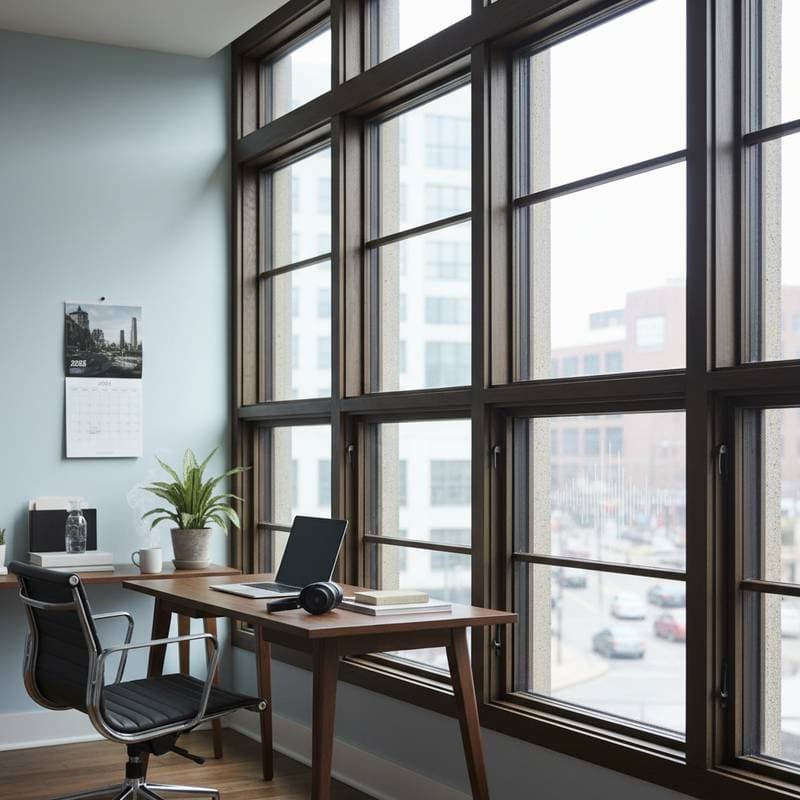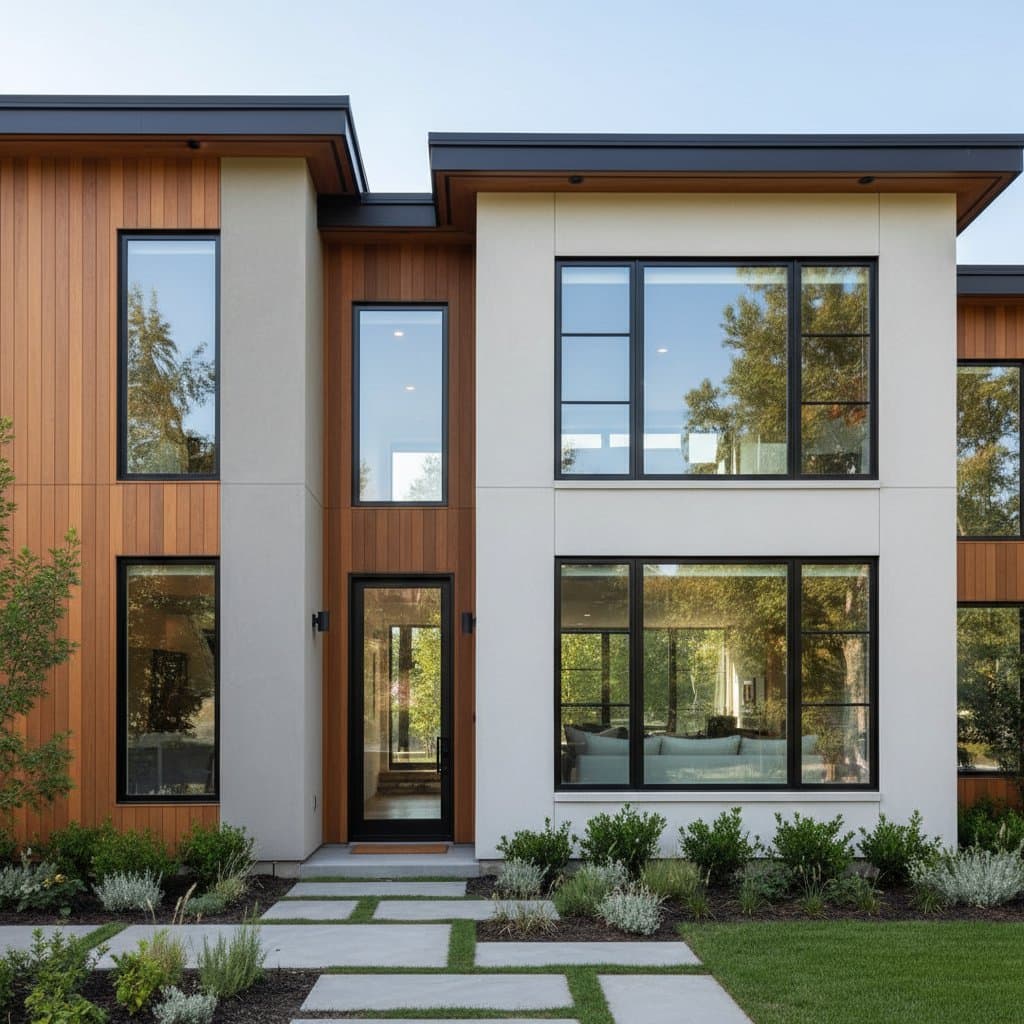Achieving 70% Noise Reduction: How Acoustic Glass Enhances Home Serenity
External noise disrupts home life more than many realize. Traffic from busy streets, persistent barking from neighborhood dogs, construction sounds nearby, or even raised voices from adjacent properties can interrupt focus, sleep, and relaxation. Acoustic glass provides an effective remedy, capable of blocking up to 70 percent of outside noise while preserving natural daylight and visual elegance. This specialized glazing alters the path of sound waves through windows, fostering a serene indoor atmosphere that elevates everyday comfort.
The Mechanics of Acoustic Glass
Acoustic glass consists of multiple panes, typically two or more, joined by an acoustic interlayer made from materials like polyvinyl butyral or ethylene-vinyl acetate. This interlayer captures sound vibrations and dissipates their energy, preventing transmission to the interior space. Consequently, the home remains quiet without the bulky look of conventional soundproofing methods. The design targets a broad spectrum of noises, from high-pitched airborne disturbances like sirens and chatter to deep, rumbling vibrations from trucks or trains that standard windows often fail to block.
Several factors influence the effectiveness of acoustic glass. Greater pane thickness enhances damping, while the interlayer's density and the air gap between panes further optimize performance. For instance, a 6-millimeter outer pane paired with a 4-millimeter inner pane and a 1.52-millimeter interlayer can achieve reductions of 35 to 40 decibels, translating to that 70 percent drop in perceived noise. Professionals evaluate site-specific conditions, such as predominant noise frequencies and window orientations, to recommend the ideal setup.
Evaluating Configurations and Their Outcomes
Various acoustic glass types suit different noise levels and budgets. Basic double-glazed versions handle everyday urban hum, whereas advanced laminated or triple options tackle intense sources like highways or flight paths. The following table compares key attributes to guide selection.
| Configuration | Upfront Cost | Expected Durability | Upkeep Requirements | Ideal Applications |
|---|---|---|---|---|
| Double Acoustic Glass | Moderate | 20+ years | Routine wiping | Suburban homes with light traffic |
| Laminated Acoustic Glass | Elevated | 25+ years | Routine wiping | City apartments near roads |
| Triple Acoustic Glass | Premium | 30+ years | Routine wiping | Properties by airports or rail lines |
Although advanced setups demand higher initial investment, they deliver superior long-term returns through enhanced livability, lower stress levels, and increased resale appeal. Consider total window area and local climate when weighing options, as these elements amplify overall benefits.
The Installation Procedure Step by Step
Professional installation of acoustic glass prioritizes precision to maximize noise barriers and structural integrity. The process starts with a thorough site survey, identifying noise origins through tools like sound level meters and inspecting current frames for compatibility. Measurements follow, accounting for thermal expansion and ensuring frames support added weight without compromising stability.
Next, technicians remove existing glass carefully to avoid damage to surrounding structures. New units slot into place with high-performance seals, such as silicone gaskets, that eliminate potential sound pathways at perimeters. Alignment checks confirm even pressure distribution, and seals undergo pressure testing for airtightness. Final verification involves operational tests—opening and closing mechanisms smoothly—and acoustic simulations to measure pre- and post-installation decibel levels, alongside visual inspections for optical clarity and thermal efficiency.
Homeowners appreciate the minimal disruption, often completed room by room in a single day for standard setups. Post-installation advice includes avoiding harsh impacts near windows to preserve seals.
Broader Impacts on Daily Living and Sustainability
Beyond noise control, acoustic glass contributes to holistic home improvement. Reduced auditory distractions promote better rest, sharper productivity during work-from-home sessions, and calmer family interactions. The interlayer's lamination feature enhances security by containing glass fragments in case of impact, minimizing injury risks from breakage.
Many variants incorporate low-emissivity coatings that reflect ultraviolet rays and regulate indoor temperatures, leading to noticeable savings on energy bills—up to 15 percent in moderate climates. This dual acoustic-thermal performance aligns with sustainable living, as it lessens reliance on air conditioning or heating systems.
Upkeep remains uncomplicated. Use microfiber cloths and ammonia-free cleaners to avoid residue buildup that could affect transparency. Inspect seals annually for cracks, especially in areas prone to humidity fluctuations, and address any issues promptly to sustain peak performance over 20 to 30 years.
Tailoring Acoustic Glass to Your Needs
Deciding on acoustic glass requires aligning technical specs with personal circumstances. Urban dwellers facing constant traffic might opt for laminated triple glazing to achieve maximum isolation, while rural homeowners could suffice with double layers for occasional disturbances. Factor in aesthetics too—tinted or frosted options maintain privacy without sacrificing light.
Engage certified installers early for on-site noise profiling and custom simulations, ensuring the solution fits seamlessly. This approach not only meets immediate quieting goals but also integrates with broader home upgrades, like energy-efficient doors, for comprehensive tranquility. Ultimately, acoustic glass invests in a sanctuary where peace, efficiency, and durability harmonize to support enriched living.






